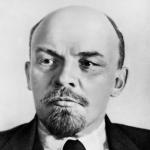Bikernieki forest on the outskirts of Riga is where the three to five thousand Jews who had managed to survive starvation, the freezing cold, and random executions of the Riga Ghetto were put to death in 1941. Not long after, the same fate would be met by some 30,000 additional Jews from numerous cities in Germany, Austria, and Czechoslovakia who had in the intervening months been transported there to be temporarily warehoused in the newly vacant ghetto.
The Church and the Critical Left in Cuba
 The influence of the Catholic Church in Cuba is growing, a recent and unanticipated development. Why? Has there been a big religious revival that has filled the Church pews? Not really. So, if there has not been a major increase in Catholic religiosity, why has the Catholic Church become important? For entirely political reasons.
The influence of the Catholic Church in Cuba is growing, a recent and unanticipated development. Why? Has there been a big religious revival that has filled the Church pews? Not really. So, if there has not been a major increase in Catholic religiosity, why has the Catholic Church become important? For entirely political reasons.
Traitors, Spies and Military Tribunals: The Assault on Civil Liberties During World War I
 Introduction: On December 31, 2011 President Barack Obama signed into law the National Defense Authorization Act (NDAA) of 2011.
Introduction: On December 31, 2011 President Barack Obama signed into law the National Defense Authorization Act (NDAA) of 2011.
The Dilemma of Freedom of Conscience: Lenin on Religion, the National Question and the Bund
 Lenin’s name is not one usually associated with freedom of conscience. Was he not the doctrinaire sectarian who brooked no difference of opinion? Did he not trample over his own convictions in the callous quest for power?[1] Careful consideration of his texts reveals a very different picture, one in which he struggles to articulate a radical freedom of conscience.
Lenin’s name is not one usually associated with freedom of conscience. Was he not the doctrinaire sectarian who brooked no difference of opinion? Did he not trample over his own convictions in the callous quest for power?[1] Careful consideration of his texts reveals a very different picture, one in which he struggles to articulate a radical freedom of conscience.
Mexico: When the Center Will Not Hold
Review of Jo Tuckman. Mexico: Democracy Interrupted. (New Haven: Yale University Press, 2012). 311 pages. Photos. Bibliographic Essay. Index. $35.00 hardback, $19.25 Kindle.
Lessons of the American Revolutionary Left of the 1970s
Book review of: Michael Staudenmaier. Truth and Revolution: A History of the Sojourner Truth Organization, 1969-1986. Oakland: AK Press, 2012. Bibliography, index. 387 pages. Paperback, $19.95.
Film Review: “The Master”
Paul Thomas Anderson’s new film “The Master,” starring Joaquin Phoenix, Philip Seymour Hoffman, Amy Adams, and Laura Dern, might alternatively have been titled “Masters and Followers,” for the movie is as much about his followers as it is about the character of the master, Lancaster Dodd (played by Hoffman).
The Lives of Billy Pilgrim, Kilgore Trout, and Eliot Rosewater by Way of Kurt Vonnegut
Charles J. Shield’s biography offers a detailed life of the writer, his strengths and weaknesses, both as an author and a person. The major thrust of the Shields biography is to present Kurt Vonnegut as two different people, the writer and the private person. A nephew told the biographer:
Seventy Years of Bolivian Radicalism
This remarkable piece of militant history, based on interviews, as well as leaflets, letters, manifestos, dug out of public archives and private collections, from the heights of La Paz to the outskirts of Paris, deals with the Bolivian labor movement, the most persistent and combative in the Western Hemisphere. Bolivia is one of the very poorest countries of the Americas, and also the most Indian: 2/3 of the population describes itself as indigenous.
Where the Rubber Meets the Road for the Indefinite Future: An Interview with Jefferson Cowie
Jefferson Cowie is Associate Professor of History at Cornell University and a leading scholar of labor and class in the United States.
Joe Hill Revisited
Dance among the standing cars,
Each suit will blow his horn…
Let’s make them doubt the system
To which they were lately born.
An Intellectual Activist
Various realist political pundits have suggested — only half-jokingly — that the Nobel Peace Prize should be given to the atomic bomb, since in their view it was nuclear deterrence that prevented the Cold War from turning into a world war.[1] But historian Lawrence S.
Mobs, Vigilantes, Cops, and Feds: The Repression of the Student Nonviolent Coordinating Committee
The Student Nonviolent Coordinating Committee (SNCC, or "Snick") came out of the sit-in movement that began on Feb. 1, 1960 in Greensboro, N.C. Its founding convention was at Shaw University in Raleigh, N.C. April 15-17 that year. 200-plus-delegates representing student civil rights organizations at 52 colleges and high schools attended.
Some Lessons of 1989's East European Revolutions: Reflections of a U.S. Peace Activist
[This article will appear in the forthcoming summer 2012 print issue of New Politics.]
Every Day Is Memorial Day
(Written the Saturday and Sunday of Memorial Day weekend 2011,when I was my usual long-term unemployed due to only temporary service work available at that time.—GF, May 18, 2012)
The Situation of the Situationists: A Cultural Left in France in the 1950s and 60s
Most of us, if we know anything at all about the Situationist International, know Guy Debord’s brilliant and famous pamphlet The Society of the Spectacle and, if we are old enough, perhaps remember the striking cover of its English language edition showing rows of moviegoers sitting passively and expectantly in a theater wearing 3-D glasses.
The Inner Logic of Avatar
In March 2010, Žižek reviewed Avatar for the New Statesman; his conclusion was that, at its core, the film duplicates a time-honored "reactionary myth" that perpetuates "vampiric exploitation" in the guise of "compassion for the poor." In short, Avatar is racist and brutal in its implications.
The Bible on Community, Poverty, and Riches
The religious right is wrong on many points, but perhaps its most outrageous distortion of truth is its use of the Bible in support of predatory capitalism. The Hebrew prophets’ bombastic indictments of the exploitation of the poor by the rich are fairly well known outside the boundaries of right-wing fundamentalism.[1] What I emphasize in this article is a broader point: the centrality of economic justice in ancient Israel’s self-understanding as a community in covenant with God and in the New Testament as well.
“A Dangerous Method”: Freud, Jung, and Spielrein
David Cronenberg’s new film “A Dangerous Method” begins in the opening years of the twentieth century with the delivery to the Burghölzli Clinic of the Zurich Hospital of a young woman named Sabina Spielrein (Keira Knightly) who, suffering from hysteria, becomes one of the early patients to undergo psychoanalysis. Spielrein, a wealthy, well-educated, and lovely young Russian Jewish woman—whose hysterical outbreaks express themselves in fits, tortuous postures, tormented speech, and bizarre behavior—comes under the care of Dr.
Piety, Money, and Catholicism
Review of Jason Berry, Render unto Rome: The Secret Life of Money in the Catholic Church, New York: Crown Publishers, 2011